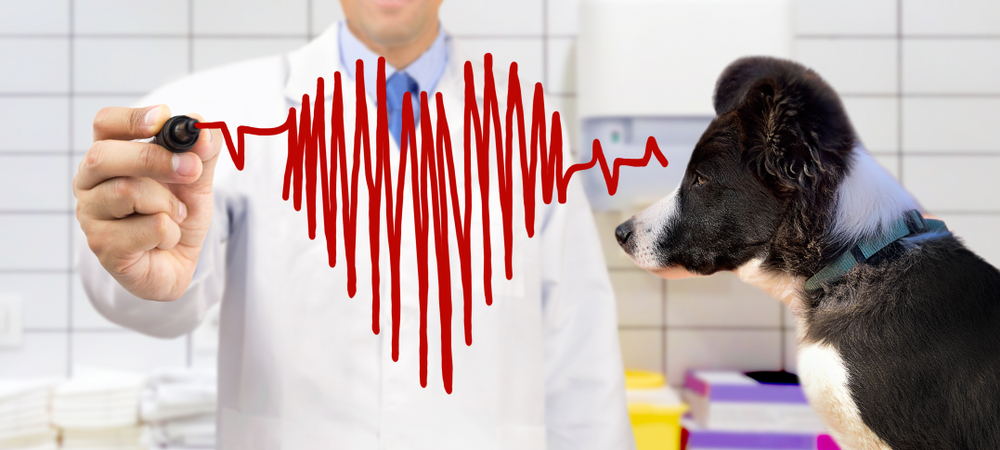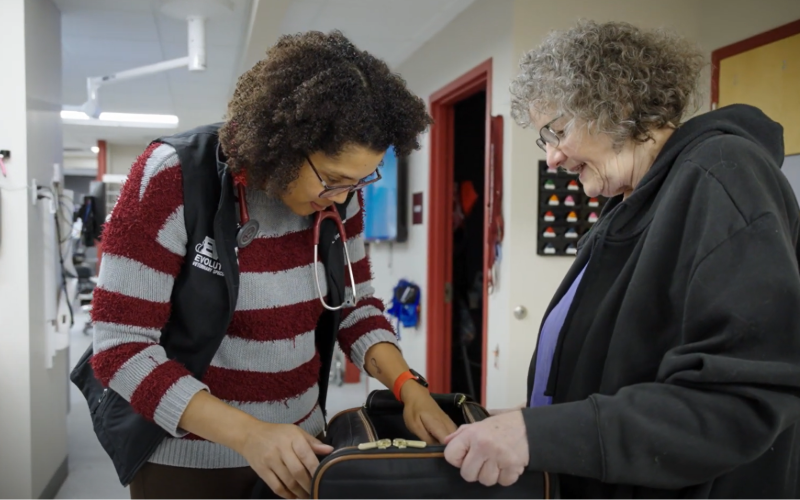What You Need to Learn About Vet Solutions: A Summary of Diagnostic Tools and Procedures
Veterinary services play an essential role in keeping the health of pets. Normal examinations can reveal concealed health problems early. Different analysis devices and treatments, such as blood tests and imaging strategies, give necessary understandings into a pet's well-being. Understanding these approaches is crucial for pet proprietors. What particular diagnostic treatments are most typically made use of, and how can they impact a pet's treatment strategy?
Significance of Regular Vet Check-Ups
While lots of pet owners might take too lightly the relevance of normal veterinary exams, these visits are essential for preserving a pet's overall wellness. Routine check outs to the vet enable early discovery of potential health and wellness concerns prior to they escalate right into major problems. Regular examinations frequently consist of inoculations, which are very important for preventing contagious illness that could seriously affect a pet dog's health. Additionally, these appointments supply a possibility for vets to assess the pet's weight, dental health and wellness, and general condition, ensuring that the pet dog is thriving. Throughout these visits, animal proprietors can also get valuable recommendations on diet regimen, exercise, and preventive care tailored to their details family pet's demands.
Usual Diagnostic Procedures in Veterinary Medication
In vet medicine, exact diagnosis is necessary for effective therapy. Typical diagnostic procedures include blood screening techniques, advanced imaging technologies, and urinalysis, each playing a substantial function in identifying wellness problems. Understanding these methods enhances the capacity to offer appropriate look after pet patients.
Blood Evaluating Strategies
Blood screening techniques act as vital analysis tools in veterinary medicine, enabling vets to analyze the health of animals precisely. These techniques entail collecting blood samples to analyze various parts, such as red and white blood cells, platelets, and biochemical markers. Common examinations consist of full blood matters (CBC), which assess overall health and wellness and find infections, and biochemical panels, which assess organ function and metabolic condition. Furthermore, serological tests can determine specific illness through antibody detection. Blood screening is minimally invasive and offers important information that helps in diagnosing problems, keeping track of health and wellness status, and examining responses to therapies. In general, these techniques play a crucial duty in guaranteeing perfect care for family pets and livestock alike.
Imaging Technologies Utilized
Analysis imaging technologies are necessary tools in veterinary medication, enhancing blood testing methods by providing aesthetic insights into a pet's interior frameworks. Typical imaging techniques consist of X-rays, which serve for evaluating bone cracks and identifying foreign items, and ultrasound, which permits real-time visualization of soft cells and body organs. Magnetic resonance imaging (MRI) supplies comprehensive pictures of intricate anatomical areas, specifically in neurological assessments. Computed tomography (CT) provides cross-sectional pictures, enhancing analysis precision for different conditions. Each of these modern technologies aids vets in identifying diseases, intending treatments, and checking recovery. By integrating imaging technologies, veterinary specialists can better assess a pet's health and make notified decisions regarding their care.
Urinalysis and Diagnostics
Urinalysis works as an essential diagnostic tool in vet medicine, providing beneficial understandings into an animal's general health and wellness and helping in the discovery of various conditions. This non-invasive treatment analyzes pee samples to analyze kidney function, hydration standing, and metabolic conditions. Typical parts checked out consist of details gravity, pH levels, glucose, proteins, and the presence of blood or germs. Unusual findings can suggest problems such as urinary system infections, diabetic issues mellitus, or kidney illness. To boost analysis precision, urinalysis is often done together with various other tests, such as blood job and imaging research studies. Early discovery via urinalysis can lead to prompt interventions, enhancing the prognosis for lots of veterinary clients. It is a vital aspect of complete veterinary care.
Understanding Blood Examinations and Lab Evaluation
Recognizing blood tests and laboratory evaluation is essential in vet medication as it aids in detecting numerous health problems in pets. Various kinds of blood examinations supply crucial info concerning an animal's internal state, while analyzing lab results requires cautious factor to consider of many factors. This section will certainly explore the types of blood tests readily available and the significance of their results.
Sorts Of Blood Tests
Blood tests play a crucial role in veterinary medication, offering vital understandings into a pet's wellness standing. Numerous kinds of blood tests are made use of, each offering various purposes. Full blood counts (CBC) analyze overall wellness and detect conditions such as anemia or infection. Biochemical profiles assess body organ feature by determining enzymes and electrolytes, providing understandings right into metabolic wellness. Serological tests determine specific antibodies or pathogens, helping in the medical diagnosis of infections or autoimmune illness. Blood keying assurances risk-free transfusions, while coagulation tests gauge the blood's capacity to clot, crucial for surgical procedures. These examinations jointly boost diagnosis, therapy planning, and monitoring of an animal's health, highlighting the relevance of complete research laboratory analysis in veterinary treatment.

Interpreting Lab Results
An extensive evaluation of laboratory outcomes is vital for accurate diagnosis and treatment in veterinary medication. Interpreting lab results needs an understanding of regular recommendation arrays and the value of deviations. Blood tests can reveal numerous health and wellness indicators, such as body organ function, electrolyte equilibrium, and the existence of infections. Vets should take into consideration the whole medical photo, consisting of the pet's history, physical evaluation findings, and any type of signs provided. Variations in results may arise from aspects such as age, type, and underlying wellness conditions. Laboratory outcomes should not be seen in isolation but rather as part of a comprehensive diagnostic method. Accurate analysis enables customized therapy strategies and much better results for vet individuals.
Imaging Techniques: X-rays, Ultrasounds, and Beyond
Imaging methods are crucial devices in vet medication, offering vital insights right into the wellness and well-being of animals. Among the most frequently used methods are Ultrasounds and x-rays. X-rays are very useful for envisioning bone frameworks, helping veterinarians identify cracks, lumps, or international things. This approach is fast and non-invasive, making it optimal for urgent situations.Ultrasounds, on the other hand, utilize sound waves to develop pictures of soft tissues and organs. This strategy is specifically helpful for taking a look at the heart, abdomen, and reproductive body organs, enabling veterinarians to check my site assess problems like fluid build-up or organ abnormalities.Beyond X-rays and ultrasounds, progressed imaging techniques such as computed tomography (CT) and magnetic vibration imaging (MRI) are increasingly made use of in veterinary technique. These approaches provide thorough cross-sectional pictures, boosting the accuracy of medical diagnoses and treatment strategies. Board Certified Veterinary Cardiologist. On the whole, imaging methods play a vital function in ensuring efficient vet care
The Duty of Biopsies in Diagnosing Animal Wellness Issues
Precision in identifying wellness issues in pet dogs typically pivots on using biopsies, which provide definitive info about tissue irregularities. A biopsy includes the elimination of a little example of tissue for assessment under a microscope, enabling vets to determine numerous problems, including infections, lumps, and inflammatory illness. This diagnostic tool is important for comparing benign and malignant growths, directing therapy choices, and reviewing the severity of a condition.Biopsies can be carried out using various techniques, such as needle goal, incisional biopsies, or excisional biopsies, depending upon the area and sort of tissue involved. The choice of technique might influence recuperation time and the quantity of cells gathered. Inevitably, the details obtained from a biopsy can cause targeted treatments, improving end results for family pets encountering serious health obstacles. Vets highlight the relevance of this treatment in attaining precise diagnoses and reliable therapy plans.
Advanced Diagnostic Tools: Endoscopy and CT Scans

Advanced diagnostic tools, such as endoscopy and CT scans, play an essential duty in contemporary veterinary medicine, supplying non-invasive techniques to visualize inner frameworks and identify various problems in animals. Endoscopy entails the usage of an adaptable tube geared up with a camera, enabling vets to examine the stomach tract and breathing system directly. This method can expose abnormalities such as growths, international bodies, or inflammation, making it possible for targeted therapy plans.CT scans, on the other hand, make use of advanced imaging innovation to develop detailed cross-sectional photos of the body (Ultrasound For Dogs). This technique is specifically helpful for assessing facility frameworks like the brain, spinal column, and joints. By giving high-resolution images, CT scans help vets in recognizing issues that might not appear via traditional radiography. Together, these sophisticated tools improve analysis precision, boost treatment end results, and eventually add to much better total pet dog health management

Analyzing Examination Outcomes: What Animal Owners Should Know
Recognizing test outcomes can be a tough job for pet proprietors, especially after innovative treatments like endoscopy and CT scans have been executed. Translating these outcomes needs a grasp of clinical terminology and a clear understanding of what the searchings for indicate regarding the family pet's wellness. Vets typically provide explanations, but the intricacy of the results can still bring about confusion.Pet owners need to actively take part in discussions with their veterinarians, asking inquiries to clarify any type of unpredictabilities. It is necessary to understand abnormal versus regular results and the implications for the family pet's therapy plan. In addition, recognizing that some results might require additional screening or monitoring can help owners remain educated concerning their pet dog's health and wellness journey. Inevitably, a collaborative technique in between pet proprietors and vet professionals promotes much better wellness outcomes and boosts the total treatment experience for pets.
Frequently Asked Inquiries
How Do I Select the Right Veterinary Center for My Family pet?
Choosing the best veterinary center includes investigating regional alternatives, evaluating qualifications, going to facilities, and analyzing personnel interactions (CT Scans For click site Animals). Focusing on referrals from relied on resources can aid assure the very best treatment and atmosphere for a family pet's wellness demands
What Should I Do if My Family Pet Declines to visit the Vet?
When an animal rejects to go now go to the veterinarian, it's advisable to continue to be calm, use deals with or playthings to lure them, and think about arranging a home go to if anxiousness continues. Persistence and favorable support are crucial.
Are There Telehealth Options for Vet Solutions?
Telehealth alternatives for vet solutions are increasingly readily available, allowing animal owners to speak with vets from another location. These solutions enable discussions about health issues, suggestions on small ailments, and follow-ups without requiring to see a facility.
How Typically Should My Animal Have Dental Check-Ups?
The frequency of dental examinations for animals normally depends upon their age and breed. Normally, veterinarians suggest annual dental evaluations, although some pets may require even more constant sees to preserve perfect dental wellness.

What Are the Expenses Related To Vet Diagnostics?
The costs related to vet diagnostics can vary extensively, typically varying from standard tests like blood work to innovative imaging techniques. Variables influencing expenses include the facility's location, tools utilized, and details tests required for every pet dog. Vet services play a crucial duty in preserving the health of animals. While numerous family pet proprietors might ignore the value of normal vet check-ups, these appointments are necessary for keeping a pet's overall health. Additionally, these visits provide an opportunity for veterinarians to evaluate the animal's weight, dental health, and general condition, making sure that the family pet is prospering. Accuracy in identifying wellness problems in family pets commonly pivots on the usage of biopsies, which provide definitive information regarding cells irregularities. Furthermore, identifying that some results may need further testing or surveillance can aid proprietors remain notified about their pet's health trip.